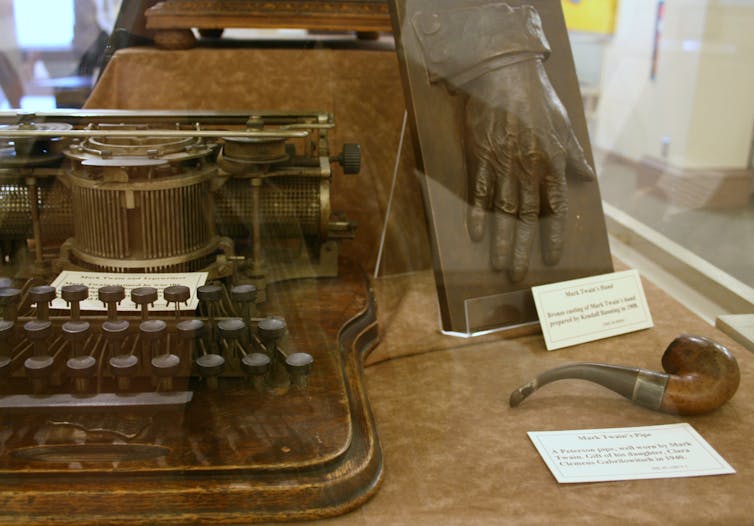The tech giant Nokia has announced plans to release a new version of the old classic 3310 mobile phone.
The original handset was popular at the turn of the century. The revised version will be a simple device that can make phone calls and send text messages, and not much else apart from play the cult game of Snake.
So why would a phone company move away from the traditional route of making smart phones more smart and opt for this retro technology?
We tend to appreciate technology if it allows us to lead an easier life by relieving us from undesirable, laborious human-work.
Think about this next time you push the auto sensor button to cook your microwave meal, random play your digital music collection or look on with astonished fear as experts talk of the potentials of artificial intelligence (AI).
Herein lies a conundrum: the more human-work we outsource to technology through advances driven by automation and digitisation, the further we distance ourselves from our innate human existence.
The desire for control
While many of us are grateful for technological progress, the apparent recoil of others is hard to miss. Take the enthusiasts of instant-print Polaroid cameras and SLR film cameras.

Others seem to enjoy typing on a typewriter, and probably take pleasure in using white-out to correct typos. The security benefits of typewriters aside, why would anyone use a technology that mesmerised writer Mark Twain nearly 150 years ago?
There is also the resurgence of vinyl records and revival of cassette tapes.
These playback formats were replaced by supposedly better technologies, such as the CD and MP3, precisely because the latter made our lives easier through downloading or streaming music with a handheld device.
So why do people yearn for technologies of a bygone era?
The love of vinyl
To answer this question, we conducted a rigorous, quantitative study of discussions appearing on a prominent online LP-related forum, Vinyl Engine.

We monitored the conversations of LP users and analysed their expressed sentiments over an eight-year period. We captured a total of 222,584 messages written by 193,779 members, comprising about 20 million words (equivalent to about 200 full-length fiction novels).
Our results paint a stimulating picture of contemporary vinyl users.
They are individuals who like to express a much higher degree of control and interaction than modern technologies would allow them.
They are technically competent and sophisticated, and willing to spend quite a bit of money to enjoy using and interacting with the technology.
They appreciate the essence of a technology rather than just wanting something to get the job done. In other words, vinyl enthusiasts do not use the turntable technology in the conventional “application-centered” sense – that is, just to listen to the music. Rather, they use it in a “technology-centered” sense; they chose to use the technology for its own sake.

Interestingly, we found that these individuals, whom we may describe as “retro-adopters”, are not that different from the “early-adopters” tech companies often target when launching their new products.
Early-adopters form a small but lucrative market segment because they are daring and risk-averse, have access to financial resources, and are able to deal with complexities embedded in technology.
These attributes make them willing and able to purchase new products – a perfect target for a tech company trying to get market traction.
A new market for ‘retro-adopters’
So could retro-adopters offer a lucrative business proposition to tech firms as well? Could Apple, Tesla or Nokia access the looming business potential in this market segment?
Our answer is a definitive “yes”, and here is how they could do it.
Step 1: Develop a new and improved product model for traditional market segments. It could be a new mobile phone with augmented reality applications or an autonomous electric car.
Step 2: Now focus on the retro-adopter segment by identifying product features that can be designed backwards. In other words, bring signature features of classic technology back into the new product.

For example, make sure the built-in camera of the smart phone requires plenty of optional manual settings such as aperture size and shutter speed. Or that the autonomous electric car requires some form of manual servicing and repairs along with manual map navigation.
Step 3: Implement a premium pricing scheme. While this may appear counterintuitive, our study indicates that retro-adopters are relatively price-insensitive. It is this aspect of the retro-segment – no matter how small it may be – that is likely to make it attractive for businesses.
If current technological trends do continue, we expect to see a larger number of retro-adopters in a wider scope of markets. This means businesses should probably start paying more attention to this segment by designing products for it.
Nokia’s revised 3310 handset is interesting, as at €49 (A$67) it is much cheaper than a new smart phone.
But it is new technology that should appeal to those who prefer a simpler design, longer battery and talk time and very limited internet access – so no (work) email or social media options.
The question that all these innovating firms face is what product features should they remove from human control and interaction (thus making our lives easier), and what features should be left in that require human intervention such as observation, modification, fixing and tinkering.
Striking this balance is imperative for satisfying our need to be in control, a fundamental aspect of being human, and for rekindling our appreciation of technology at the same time.

